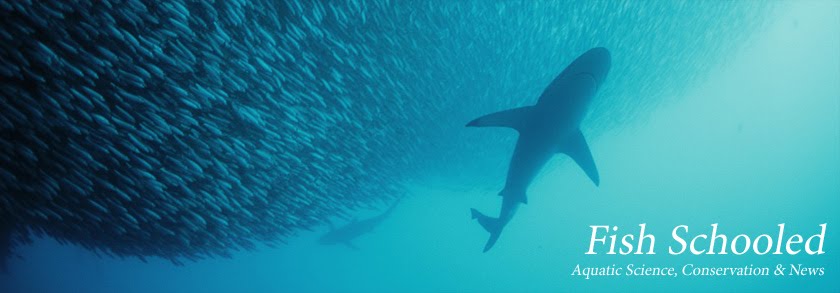
Can environmental conditions during early development shape individuals phenotypes so they become more adaptive to the conditions they are likely to encounter later in life? Such phenotypic plasticity could provide organisms with the potential to respond effectively to environmental change. One area where such plasticity would be important would be in an animals sensory capabilities. Animals extract information from the environment using a number of sensory systems, and this information guides the animal as it locates food and mates, while also avoiding predators. Thus, the ability to compensate for a deficit in one sense, by increasing the acuity in another, is likely to be of critical importance within sensory disparate habitats. This is what is named the 'compensatory plasticity hypotheses'.
In this experiment the authors raised newly born guppies at low and high light intensities, and then tested their ability to locate food using both chemosensory and visual cues. Guppies, Poecilia reticulata, reared at high light intensities responded best to visual cues, while those guppies reared under low light intensity responded the strongest to olfactory cues. These results confirm the 'compensatory plasticity hypothesis' and shows that these fish have remarkable sensory plasticity. They are able to switch from vision to olfaction in environments where light is limiting.
How this switch occurs is unknown. It may be due to increased attention to sensory signals through learning, neurophysiological changes in the hard wiring of the sensory circuits, or structural changes in the morphology of the sensory unit (i.e olfactory epithelium such as increased lamellae folding) or in the brain itself. In rats that have undergone early visual deprivation you find a reduction in the grey matter within the visual cortex, and an increase in neuron density in the auditory cortex.
The ability to switch sensory modes is likely to be of upmost importance in aquatic ecosystems, which are among the most heavily impacted in the world due to human induced changes. These changes can often result in decreased visibility due to increases in turbidity, or change the olfactory environment through the release of pollutants. How fish species can respond to these changes through sensory plasticity is still largely unknown. Research on larvae of the marine striped trumpeter, Latris lineata, showed that individuals reared in clear water had reduced foraging efficiencies in turbid water. In contrast, larvae reared in turbid water were able to maintain their foraging capability. This suggests that fish are capable of doing so, but to what degree is an area that definitely requires further investigation.
Chapman, B., Morrell, L., Tosh, C., & Krause, J. (2010). Behavioural consequences of sensory plasticity in guppies Proceedings of the Royal Society B: Biological Sciences, 277 (1686), 1395-1401 DOI: 10.1098/rspb.2009.2055


No comments:
Post a Comment